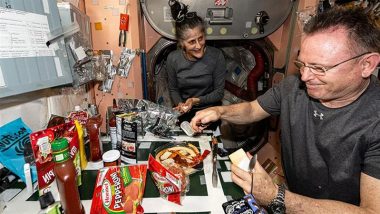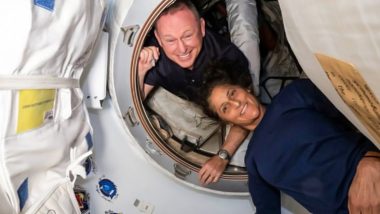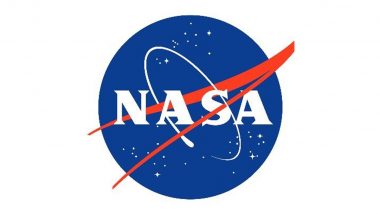NASA's Global-scale Observations of the Limb and Disk (GOLD) mission has made a groundbreaking discovery, revealing 'alien objects' X and C-shaped structures in Earth's upper atmosphere, ionosphere. The ionosphere is a layer of charged particles in the upper atmosphere that plays a vital role in facilitating long-distance radio communication. The ionosphere’s density is typically governed by sunlight ionization, causing it to fluctuate throughout the day. Now, the ionosphere has revealed new complexities. GOLD, a geostationary satellite launched in 2018, has been specifically monitoring these variations. However, recently, unusual 'alien objects' X-shaped patterns have been observed within the smooth plasma regions in the ionosphere. This significant finding has opened new avenues for understanding the complexities of our planet’s ionosphere. Earth’s Inner Core Has Slowed Down for the First Time in Decades and Rotating in Reverse Direction, Confirms Scientists: What Does It Mean?
These X-shapes were previously observed by scientists during peak space weather activity, such as solar storms or volcanic eruptions. However, GOLD's detection of these structures during geomagnetically quiet times has suggested additional, yet unidentified, factors influencing the ionosphere’s dynamics.
Fazlul Laskar, a research scientist at the University of Colorado's Laboratory for Atmospheric and Space Physics (LASP), said in a statement that “Earlier reports of merging were only during geomagnetically disturbed conditions.” Laskar is the lead author of the published paper of April in the ournal of Geophysical Research: Space Physics that described these unexpected observations.
He added, “It is an unexpected feature during geomagnetic quiet conditions.” This shows that events in the lower atmosphere have a more significant impact on the ionosphere than extreme solar or volcanic activities.
Apart from detecting the X-shapes, GOLD also unveiled curved C-shaped bubbles in the plasma, which surprisingly appeared close together. These bubbles are believed to be shaped and oriented based on wind direction. The images of the C-shaped and reverse C-shaped bubbles captured by GOLD are as close as 400 miles (643 kilometres) apart. Researchers suggest that such drastic changes in wind patterns over short distances are highly unusual.
“It's really important to find out why this is happening,” LASP research scientist Deepak Karan, lead author of a separate paper published in November in the Journal of Geophysical Research: Space Physics, said in the statement. He added, “If a vortex or a very strong shear in the plasma has happened, this will completely distort the plasma over that region. Signals will be lost completely with a strong disturbance like this.” Sunita Williams, Barry Butch Wilmore, NASA Astronauts Stuck at ISS, To Address Earth From Space on July 10; Check Time and Live Streaming Details.
This is not the first time NASA has attempted to study the ionosphere. The recent project, Atmospheric Perturbations Around The Eclipse Path (APEP), aimed to study how a reduction in sunlight and temperature impacts the Earth’s upper atmosphere. NASA, during the annular and total solar eclipse, launched three suborbital sounding rockets into the eclipse path to measure changes in electric and magnetic fields. They also aimed to measure the density and temperature within the ionosphere. However, the results of the mission are pending and yet to be revealed.
(The above story first appeared on LatestLY on Jul 09, 2024 10:58 AM IST. For more news and updates on politics, world, sports, entertainment and lifestyle, log on to our website latestly.com).













 Quickly
Quickly




















